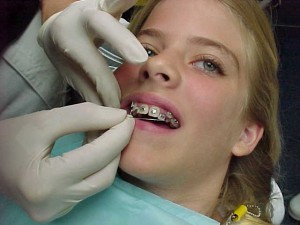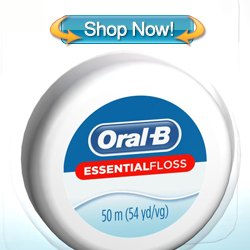 I thought braces were for kids! They are, and they’re not. Many adults are acquiring the services of an orthodontist today. Orthodontia has evolved a long way from the ‘metal mouth’ image. Now bonded brackets and clear-colored braces that are not so noticeable are available. According to Dr. Sebastian, DDS, an Atlanta Orthodontist, there is less time and discomfort involved in braces today. He says adults may wear the braces an average of 12-20 months.
I thought braces were for kids! They are, and they’re not. Many adults are acquiring the services of an orthodontist today. Orthodontia has evolved a long way from the ‘metal mouth’ image. Now bonded brackets and clear-colored braces that are not so noticeable are available. According to Dr. Sebastian, DDS, an Atlanta Orthodontist, there is less time and discomfort involved in braces today. He says adults may wear the braces an average of 12-20 months.
Crooked teeth or the classic overbite or under-bite are not just unattractive. They can have serious repercussions for dental hygiene and jaw alignment.
In the past, if teeth were misaligned, straightening them as an adult was not considered. In fact, many people exhibited very crooked teeth throughout their lives. It was not uncommon to see persons with extreme over-bites or incredibly crowded teeth. With the evolution of orthodontia and it’s revolution within the last ten years, an adult or child with serious malocclusion is seldom seen in the US today.
Now it may be easier than you thought to provide yourself with a beautiful and healthy smile. Orthodontics Simi Valley provides a consultation and an evaluation. When this is completed, the choices are yours.
WHAT TO EXPECT
You’ve decided to achieve the smile you want! First, realize that braces are a journey, but the end results could possibly exceed your expectations.
1. Before proceeding, your teeth will be thoroughly cleaned and dried. They must be dry to attach the brackets.
2. A strong bonding glue is put on the teeth and brackets attached.
3. Next, the dentist will place an archwire into the brackets and hold that tight with elastic bands.
WILL IT BE PAINFUL?
Not at first. But remember, the braces are going to re-align teeth. The teeth are encased in bone. All of this must be shifted and repositioned to achieve results. So discomfort can be expected for about a week. The mouth and teeth will hurt.
WHAT TO DO
Eat soft foods for a couple of days. Foods like mashed potatoes, yogurt and soup will be easily swallowed. Over-the-counter pain relievers like ibuprofen relieve soreness.
Mouth sores can be an issue in the first few weeks of orthodontia. A product called orthodontic wax may be applied as a barrier between the mouth and the rubbing appliance. Use as much as necessary.
GETTING USED TO THE IDEA
it takes about a month for a person to get used to braces. Like all appliances in the mouth, there is an adjustment period. After a period of six months, their presence can be
ignored.
It is not unusual for a tooth to begin hurting for no apparent reason. This is normal because pressure is being brought to bear to shift positioning.
The important thing about braces is to keep in mind their purpose. Most adults are happy to anticipate a new look!




